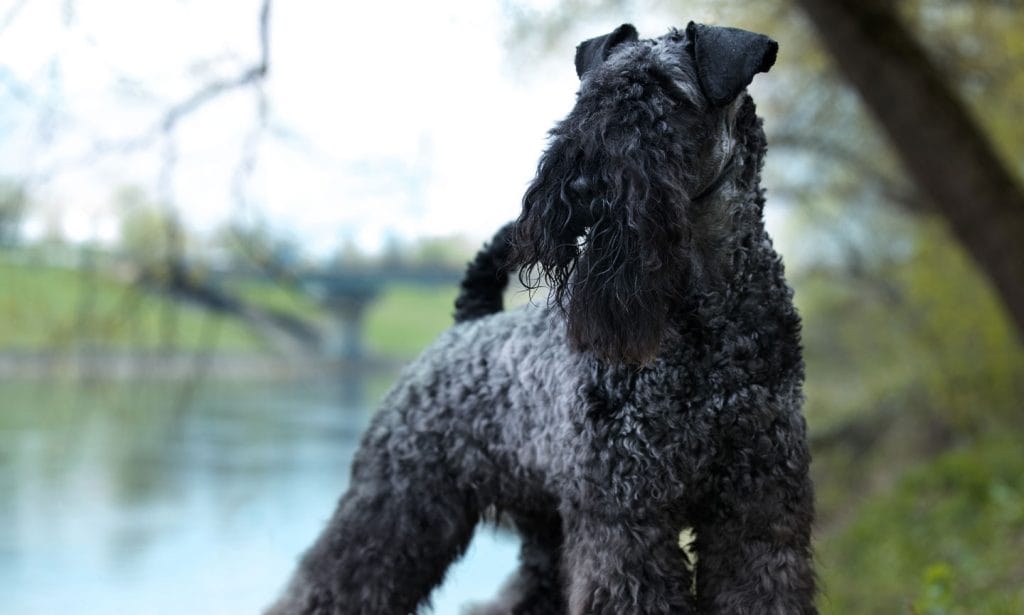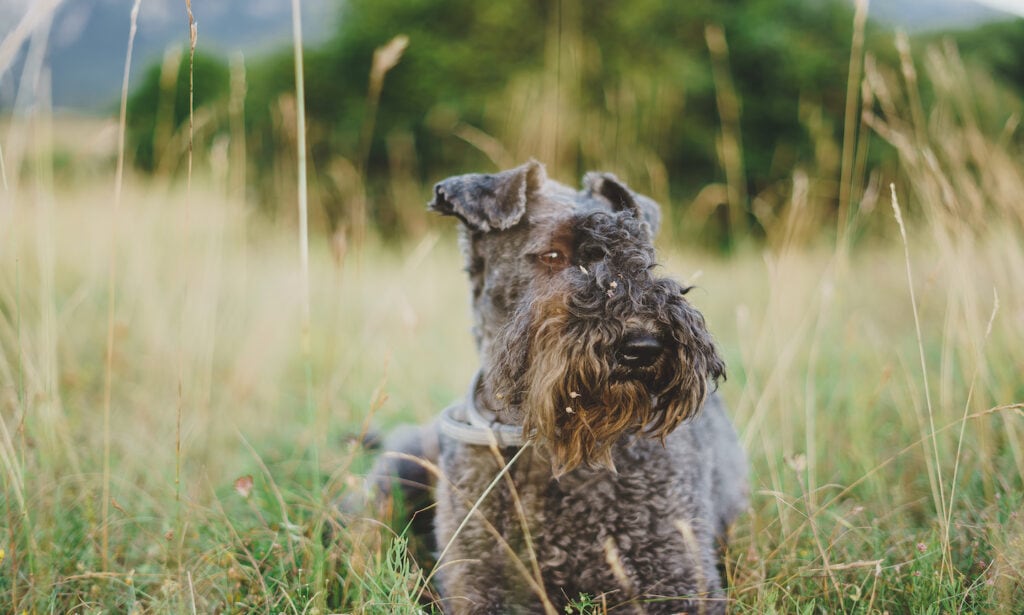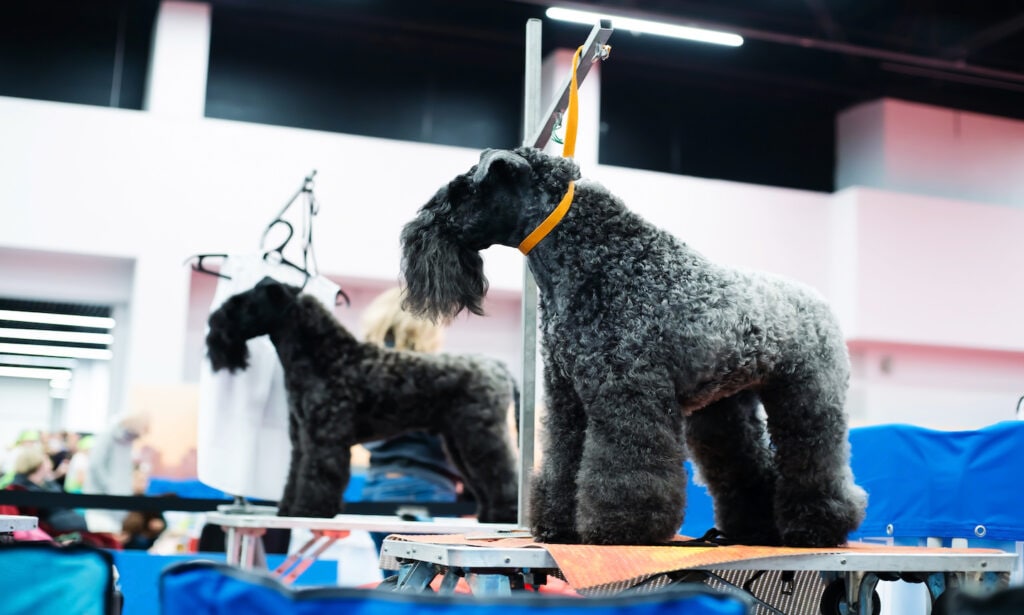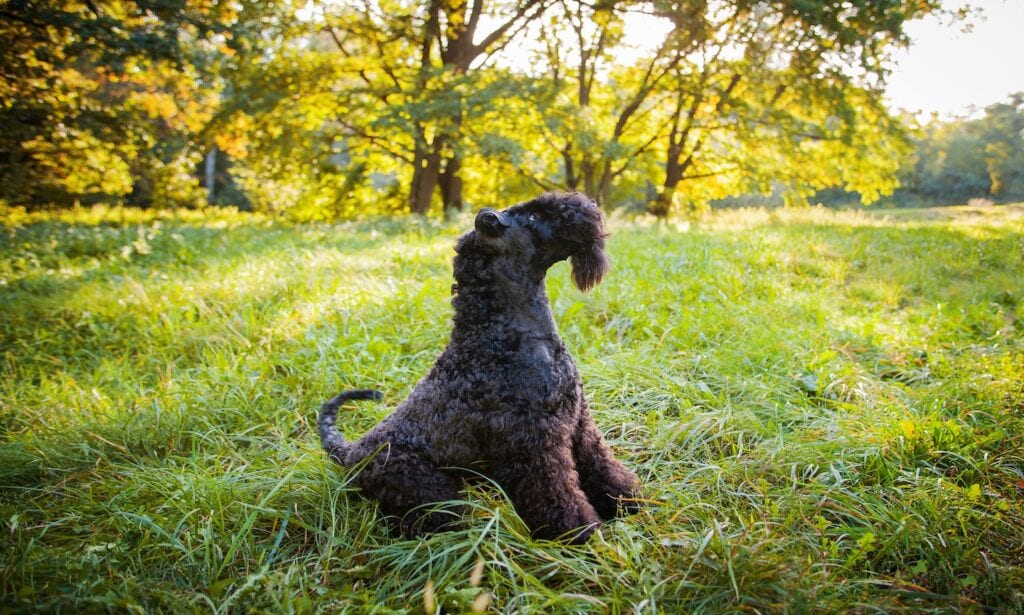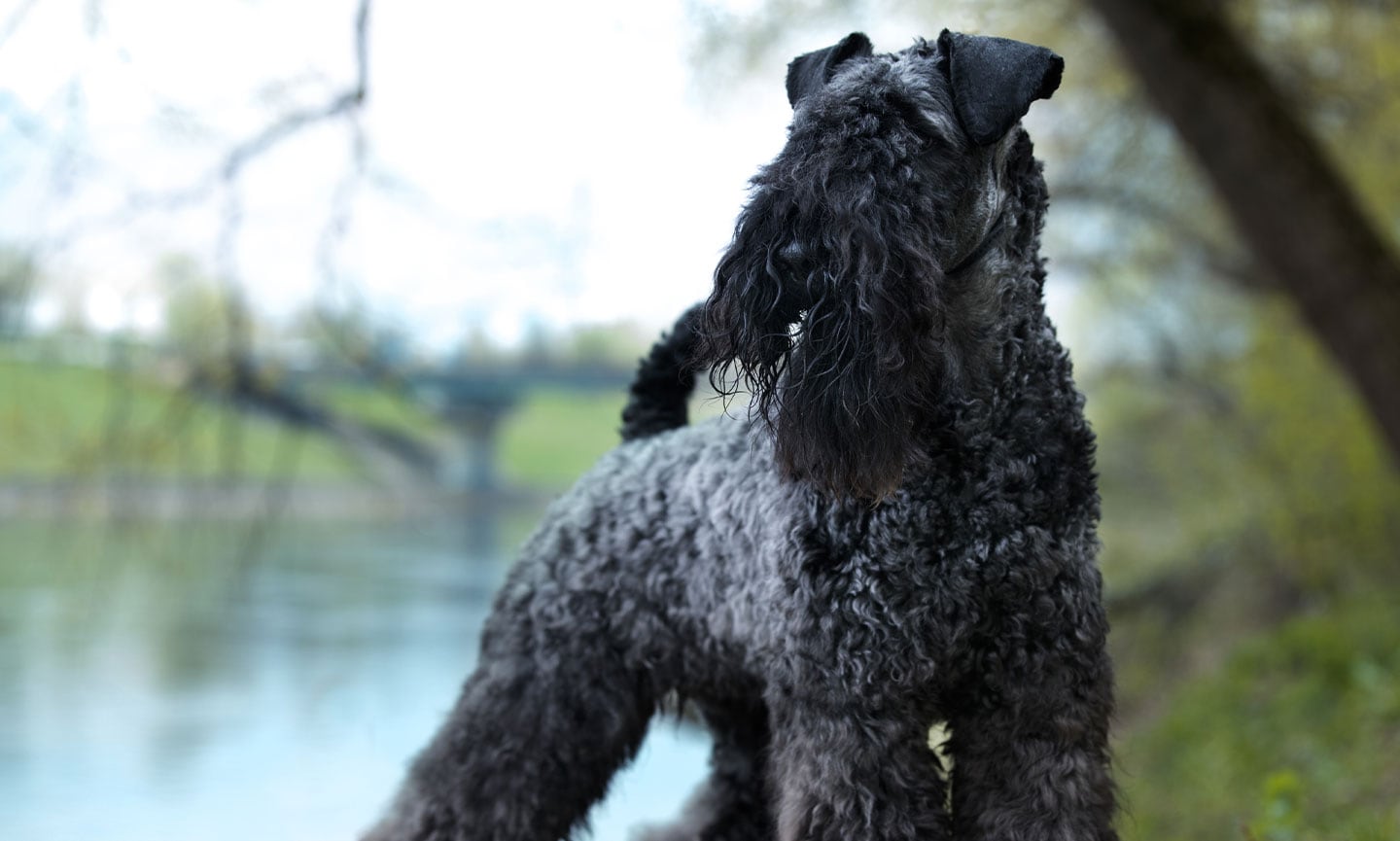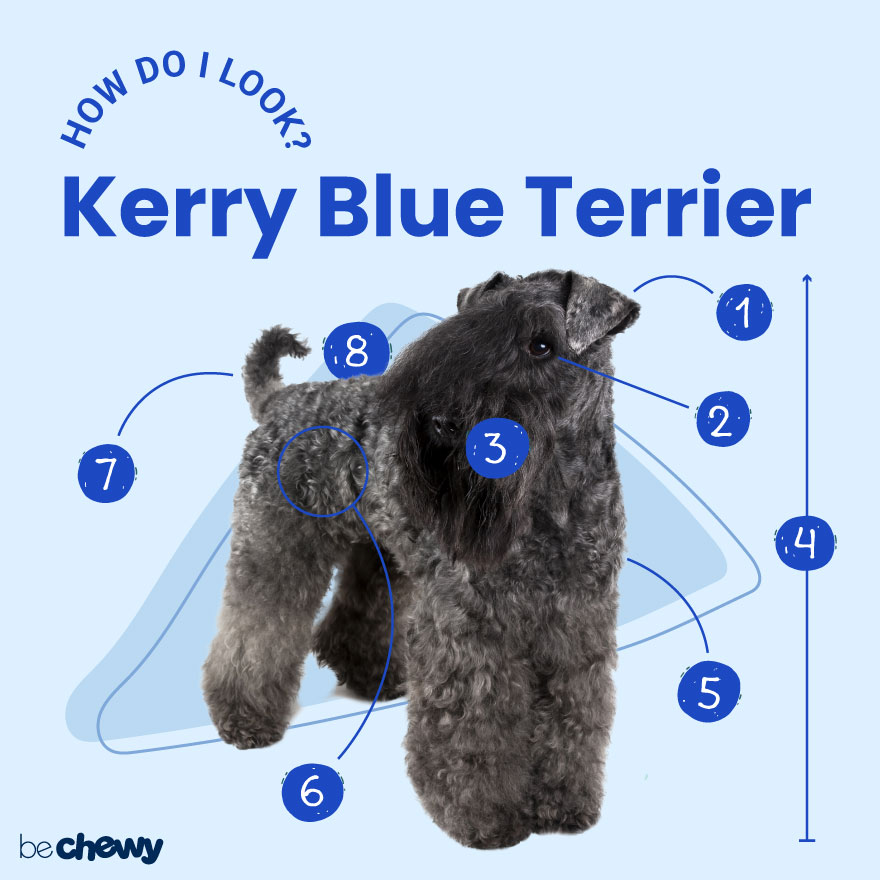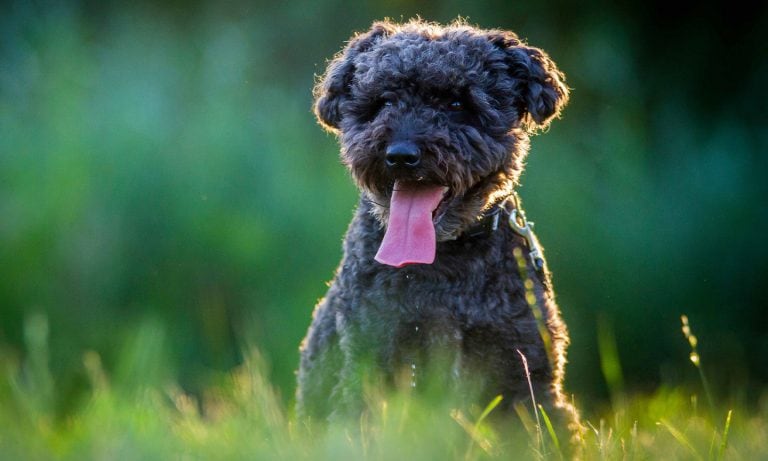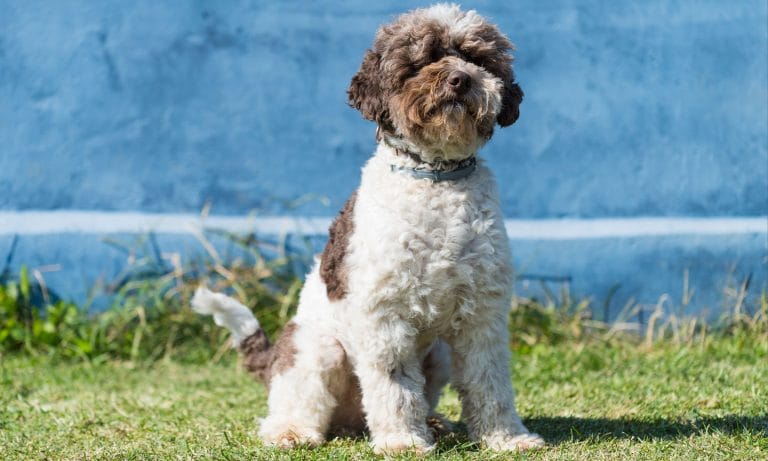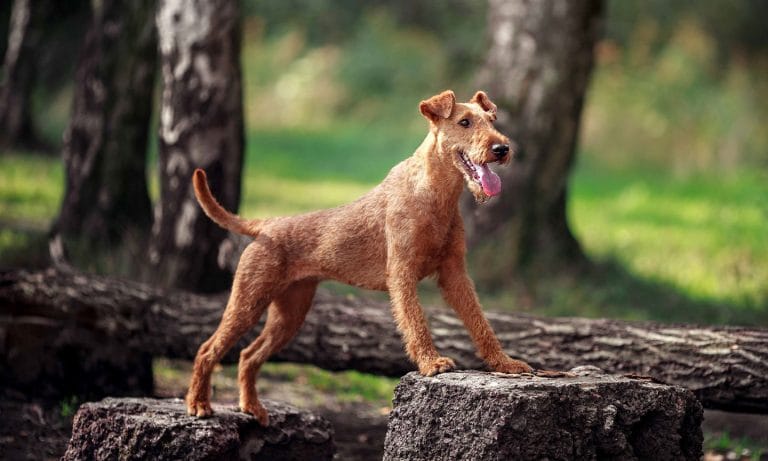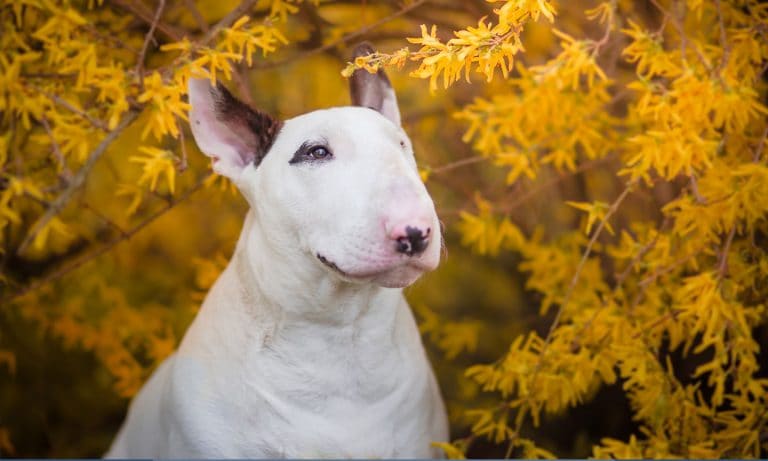If you look up the word “feisty” in a dictionary, you might just find a pic of the Kerry Blue Terrier. These smart cookies think life is a full-contact sport that you shouldn’t just observe from the sidelines. Unless it’s a night in, they’re game for whatever you’ve got planned (fetch, games, or even hiking … it’s all good in a Kerry Blue’s world). Kerries are full of life and are ready to be your partner in crime—if you’re prepared to plan the adventures.
Breed Snapshot
Temperament:
AlertIntelligentAffableCoat Color:
BlackBlueBlue And BlackBlue And SilverBlue And GraySilverSilver BlueSlate Blue
Best For
The Kerry Blue Terrier needs an active family with experience socializing and raising a dog. Pet parents must be willing to train consistently and have time for lots of grooming—or, as you'll come to call it, bonding time.
Kerry Blue Terrier Temperament
The Kerry Blue Terrier temperament is alert and intelligent, with a capable, strong-willed approach to work and play. Like other terriers, they tend to be fearless, energetic, mischievous and tenacious (yes, they can be a handful!). A potential Kerry pet parent must bear in mind that this tough-as-nails former hunting and guard dog was bred to work at singular tasks, which can make Kerry Blue Terrier training somewhat challenging, though still achievable.
Raising a Kerry Blue Terrier as a family pet is a fine idea as long as early and consistent training is on the schedule. They don’t enjoy being left alone for long, so if you work outside the home, you may want to sign up for doggie daycare or enlist the aid of a dog sitter or neighbor to stop by for some playtime. Supervise small children around a new dog, as you should with every dog breed.
The Kerry Blue Terrier is friendly and playful on the whole, but when it comes to other dogs and cats in the home, they don’t play nice with others. Alas… With that in mind, Kerry Blue Terriers are happiest when they’re the (sole) animal pack leader and your only pet.
As all-purpose working terriers, the Kerry Blue held many past positions, including livestock herder, sheep guardian and CEO in charge of removing any and all vermin, such as mice, otters, badgers and hares. Today’s Kerry Blue Terrier characteristics feature high energy and a lively manner, making this breed a lovely canine companion for the get-up-and-go set.
How to Care for a Kerry Blue Terrier
A Kerry Blue Terrier’s blue coat needs diligent care to keep it looking sharp, and you’ll spend lots of time training and exercising your loveable pup.
Kerry Blue Terrier Health
Kerry Blue Terrier Health
A Kerry Blue Terrier has a lifespan of 12 to 15 years. Their health issues aren’t usually extensive, but like any breed, certain conditions may develop over time. Here’s more about each one:
- Hip Dysplasia: A genetic malformation of the hip can cause the ball of the joint to be ill-positioned in the socket, resulting in dysplasia. You may notice limping and pain, which can develop into arthritis. Treatment options range from weight management, joint supplements, pain medication, and surgery in severe cases.
- Eye Conditions: Cataracts may occur in an older Kerry, which appear as opacity of the eye’s lens. A veterinary ophthalmologist can often remove a dog’s cataracts surgically. Your Kerry may also develop dry eye (keratoconjunctivitis sicca), which is when the tear glands don’t produce enough tears. Sore, itchy eyes are often the result, but your vet can perform a test to confirm. Treatment is usually eye ointment.
- Neurological Disorders: Degenerative myelopathy is a progressive neurological condition that disrupts normal communication between the brain and limbs. While no cure is available, a genetic screening test is available for DM in dogs. Another similar disorder, known as progressive neuronal abiotrophy, can affect a Kerry’s gait and balance and eventually result in the inability to walk.
- Blood Conditions: Hemolytic anemia and thrombocytopenia are blood disorders that cause the immune system to attack the dog’s red blood cells or platelets. Dogs with this anemia type have weakness, lethargy and whitish or yellow gums; dogs with a platelet issue have blood that won’t clot properly. Treatment for either is typically with steroids, immune-suppressive drugs and transfusions. Kerry Blues can also have a deficiency in clotting factor XI, which can be detected by genetic screening tests.
- Inflammatory Bowel Disease: IBD is an immune disorder that affects the intestinal lining, causing chronic diarrhea and vomiting. While it may flare and subside, medication and special diets are typically needed to treat IBD.
- Hypothyroidism: Too little thyroid hormone means your dog may exhibit a dry coat and skin, hair loss, weight gain and behavioral changes. Daily oral medication is most often the treatment for this condition.
Kerry Blue Terrier History
The Kerry Blue Terrier’s history begins with an old Irish tale that centers on County Kerry, from which these dogs get their name. Also known as the Irish Blue Terrier for apparent reasons, the true Kerry Blue Terrier origin is a bit of a mystery. Some believe Irish laborers bred the Kerry in response to the much larger, noble-class-favored Irish Wolfhounds. And while the Wolfhound’s job was to keep illicit hunters off of their masters’ property, the more stealth, diminutive Kerry Blue Terrier allowed those laborers to poach game on these same noble grounds.
There’s also evidence that the Kerry Blue’s original role was that of a utility terrier on the farm. Stepping in to help in myriad ways, this dog hunted down pesky creatures like rats, rabbits and badgers and aided in guarding and herding livestock such as cattle and sheep. In England and their native Ireland, the breed also assisted in hunting small game and birds, retrieving them from the land and water once the hunters hit their marks.
The Kerry Blue Terrier has a patriotic streak as a mascot for those who strove for Irish independence. The breed first came to North America in 1918 and started to appear in various dog shows in the early 1920s. Today’s Kerry Blue is still well-equipped to find a mouse in the house, but most pet parents set up a comfy dog bed near the fireplace so their beloved companion can relax instead.
If you’re considering this blue-coated dog, which the American Kennel Club recognized in 1922, keep in mind that Kerry Blue Terrier prices tend to range between $2,000 to $2,500 for puppies. To find a puppy, check out the reputable breeders of the Kerry Blue Terrier at the AKC Marketplace. You can also reach out to Kerry rescue organizations to adopt a Kerry, keep an eye out for the breed at your local animal shelter, or search Chewy’s database of adoptable dogs near you.
FAQs
Do Kerry Blue Terriers shed?
Luckily for you (and your upholstery!), Kerry Blue Terriers barely shed. But weekly brushing and combing are still important to remove loose hair and keep knots from forming in your pup’s fur.
Are Kerry Blue Terrier good family dogs?
Yes, the Kerry Blue Terrier is good with kids and rather amiable as long as training is consistent and starts when your dog is a puppy. But take care when mixing a Kerry with other canines or cats and make sure introductions are performed slowly and properly.
How long do Kerry Blue Terriers live?
The Kerry Blue Terrier’s lifespan is long, dog-wise. This breed can live between 12 and 15 years.
Do Kerry Blue Terriers bark a lot?
Kerry Blue Terriers tend to bark at a medium level. As former guard dogs, they’re well-equipped to sound the alarm if someone unknown approaches or there’s a delivery in the driveway.

Top Takeaways
Lively and determined, with a coat that causes people to stop and stare, a Kerry Blue Terrier has many positive traits. Though this terrier type does have a mind of their own, this personality quirk doesn’t rule out the breed as a loving pet. High-energy families with spare time to brush and clip are welcome here!
Expert input provided by veterinarian Jerry Klein, DVM; certified animal behaviorist, Dr. Mary Burch; certified dog trainer and behavior consultant Ivan M. Petersen, founder of Dog Wizardry; and veterinarian Dr. Corey Shagensky, DVM, founder and owner of Progressive Animal Wellness in Avon, Conn.
Breed characteristic ratings provided by Dr. Sarah J. Wooten, DVM, CVJ, a veterinarian at Sheep Draw Veterinary Hospital in Greeley, Colorado; dog trainer and behavior consultant Irith Bloom, CPDT-KSA, CBCC-KA, CDBC, owner of The Sophisticated Dog, LLC, in Los Angeles; and certified animal behavior consultant Amy Shojai, CABC, in Sherman, Texas.
The health content was medically reviewed by Chewy vets.

Search for Adoptable Kerry Blue Terriers Near You
Top Kerry Blue Terrier Names
These are the top Kerry Blue Terrier names as chosen by Chewy's pet parents!
Female Names
- Dolly
- Nora
- Maggie
- Scarlett
- Gracie
- Siobhan
- Lady
- Hola
- Shadow
- Nia
Male Names
- Bailey
- Blue
- Murphy
- Angus
- Brady
- Finn
- Rocky
- Rocket
- Remy
- Fernando
Share:
